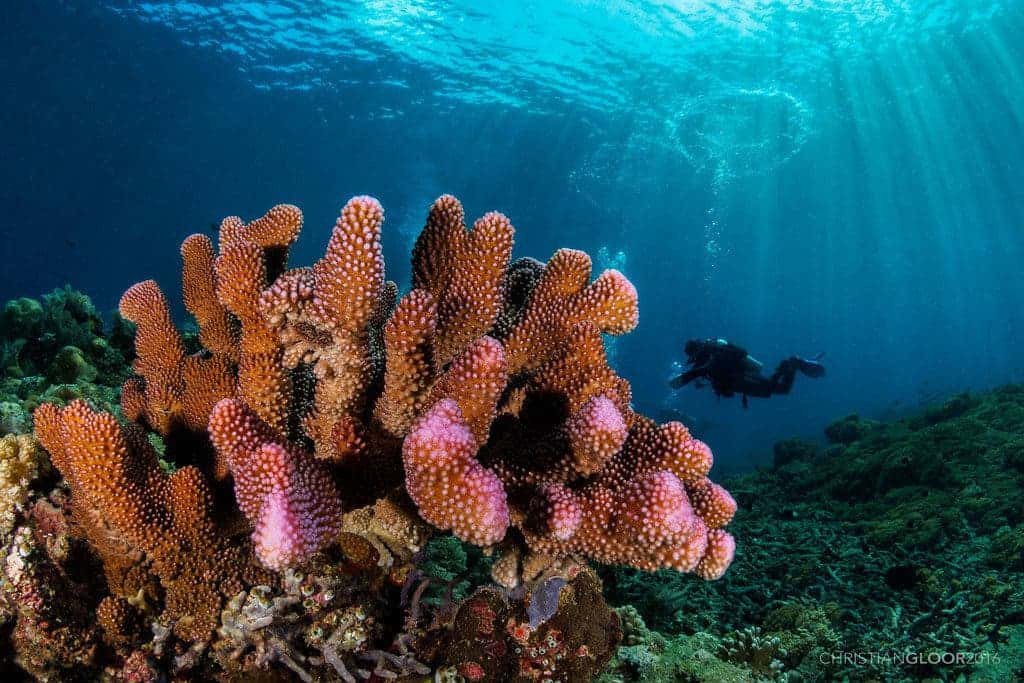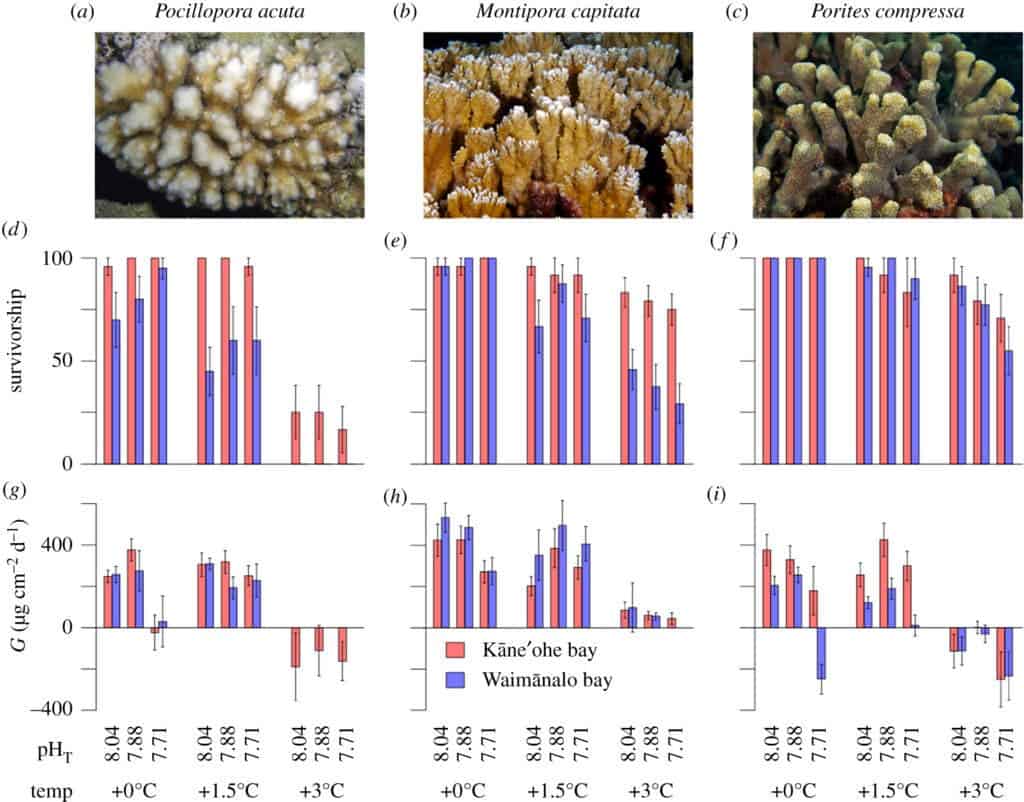
Credit: Flickr, Christian Gloor.
Human activity such as carbon emissions and pollution are threatening coral colonies across the globe. Some believe that at this rate, the world’s coral reefs will collapse within a couple of decades. But that’s assuming all coral are the same, which is not true. Some coral species are more resilient than others, and some — such as those growing in Hawaii’s Kāne’ohe Bay — are so tolerant to warm and acidic waters that scientists are calling them “supercorals”.
Acid and coral
Around half of all carbon dioxide produced by humans since the industrial revolution has dissolved into the world’s oceans which, along with forests, act like huge carbon sinks. So a lot of the damage of increasing CO2 levels in the atmosphere is actually felt underwater.
When carbon dioxide (CO2) is absorbed by seawater, chemical reactions occur that reduce seawater pH (increase acidity), carbonate ion concentration, and saturate states of biologically important calcium carbonate minerals. This severely impacts the ability of some organisms to produce and maintain their shell. More and more studies suggest some calcifying species, including oysters, clams, sea urchins, shallow water corals, deep sea corals, and calcareous plankton, are dramatically affected by ocean acidification.
Since the industrial revolution, the pH of surface ocean waters has fallen by 0.1 pH units, whicj equates to a 30% increase in acidity (the pH scale is logarithmic). Climate models suggest that under a business as usual scenario (i.e we continue on our upward trend of CO2 emissions), the oceans could become nearly 150% more acidic by the end of the century. These conditions haven’t been experienced at any point in the past 20 million years, NOAA warns.
Coral reefs (which provide habitats for marine life, protect shorelines and drive tourist economies) are particularly vulnerable to ocean acidification. When coral is stressed by environmental conditions like an acidic environment, the symbiotic algae that live within it are expelled and the coral turns white or bright yellow — this is referred to as bleaching. The phenomenon doesn’t kill the coral immediately, but long term bleaching will.
Half of the world’s corals are now gone due to a combination of bleaching, pollution, and overfishing. This is a dire statistic, but that doesn’t mean that the coral that is left is helpless.
Marine biologists at the University of Hawaii tested coral from Kāne’ohe Bay. Between 1930 and 1970, sewage and dredging destroyed almost 95% of the reef, but populations bounced back after the pollution stopped in 1978. What was especially impressive was that some of the reefs rebounded in waters that were warmer and more acidic than neighboring waters — conditions that many scientists predicted would kill corals around the world.
For their study, the researchers wanted to test the resilience of the reefs. They collected branches from three coral species from two dozen colonies at Kāne’ohe Bay and neighboring Waimānalo Bay. In the lab, the corals were exposed to warm and acidic waters inside aquariums for a duration of five weeks.

Effects of pH and temperature after three months of exposure on survivorship (d–f), and calcification rate (g–i) for the three coral species examined in this study (a–c). Credit: Proceedings of the Royal Society B: Biological Sciences.
The Kāne’ohe Bay corals proved stronger than those from Waimānalo Bay, tolerating warmer and more acidic waters. They also grew twice as fast as the Waimānalo Bay corals, according to the paper, which was published in the Proceedings of the Royal Society B: Biological Sciences.
“These results show that corals can have different pH and temperature tolerances among habitats and understanding the mechanisms by which coral cover rebounded within two decades under projected future ocean conditions will be critical to management. Together these results indicate that reducing human stressors offers hope for reef resilience and effective conservation over coming decades,” the authors concluded.
Perhaps, the future of coral reefs isn’t as bleak as we thought. But it will still be challenging. Migrating super coral to other parts of the world will prove highly difficult. And under a business as usual scenario, even these highly resilient super corals will die at some point unless we stop burning fossil fuels.









